Receptive language
A toddler looks at and talks about existing symbols designed to tell how a room works.

Existing symbols in room (see Be Prepared)

Picture

Cognitive

Clap Hands by David Ellwand
Five Little Ducks by Penny Ives
Twinkle, Twinkle, Little Star by Iza Trapani
Wheels on the Bus by Jerry Smath
Itsy Bitsy Spider by Annie Kubler
Be Prepared: Identify existing pictures or drawings posted in your room aimed at helping toddlers understand how your room works. Examples: a photo on a shelf that tells where specific toys belong, pictures that show your room’s daily schedule, a handwashing poster, pictures of toddlers above their cubbies, an exit sign.
Invite a toddler to join you in looking at some pictures that tell us how our room works. Walk around the room with the toddler, stopping to talk about pictures you wish to emphasize or which are of interest to the toddler. For each picture, invite the toddler to say what the picture tells us. Repeat and extend the toddler’s response. Example: Toddler says “star” for a picture of star builders. “Yes, this is where we put our star builders. Our star builders are on this shelf when we are not playing with them.” Emphasize the practical purpose of a picture, such as helping a caregiver know what door to use during a fire drill or shelter-in-place procedure.
The one-to-one arrangement for this activity promotes individualized interaction with a toddler. This is beneficial because toddlers likely differ in their understanding of specific pictures in your room. The activity may be done with a small gathering of toddlers.
Visual symbols support children’s understanding of and effective participation in an environment. They also are a valuable way to promote receptive language skills. Toddlers will likely be well informed about pictures of toddlers above the cubbies, but some symbols are sometimes overlooked in a room. The activity offers an opportunity to highlight potentially useful pictures and, at the same time, heighten a toddler’s awareness of the role of symbols in an environment.
A toddler may want to look at and talk about artwork and other items posted in your room. Support this interest while giving attention to pictures related to the activity’s goal. Also, a toddler may wish to join an activity or interest area while you are walking around your room.
If you involve a small gathering of toddlers in the activity, anticipate that some may become impatient talking about a familiar picture that other toddlers in the gathering do not know.
Extra support
Enrichment
Receptive language, Awareness of print and picture
Toddlers use picture cards to identify familiar songs.

*Picture cards for songs (see Be Prepared)
*Printables provided


Cognitive

Clap Hands by David Ellwand
Five Little Ducks by Penny Ives
Twinkle, Twinkle, Little Star by Iza Trapani
Wheels on the Bus by Jerry Smath
Itsy Bitsy Spider by Annie Kubler
Be Prepared: Secure the provided picture cards for 3–5 of the following songs frequently sung in toddler rooms: “Wheels on the Bus,” “Open, Shut Them,” “Twinkle, Twinkle, Little Star,” “Itsy Bitsy Spider,” and “Five Little Ducks.” Give priority to songs familiar to toddlers in your room. You may wish to prepare a simple picture card(s) for another song(s) enjoyed by toddlers in your room. It is not necessary to use ELM-provided cards and the songs they represent.
[Invite toddlers to join you in figuring out what some picture cards tell us.]
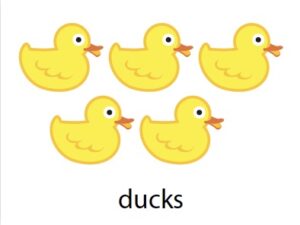 I have some cards with pictures. The picture on each card tells us about a song we like to sing. Let’s look at each card and try to figure out what song the picture is telling us about.
I have some cards with pictures. The picture on each card tells us about a song we like to sing. Let’s look at each card and try to figure out what song the picture is telling us about.
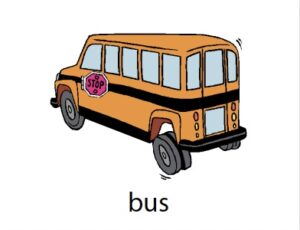 [Display a picture card for a song you anticipate toddlers will readily identify.]
[Display a picture card for a song you anticipate toddlers will readily identify.]
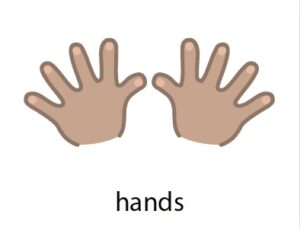 [Enthusiastically sing the first several lines of the song, not an entire verse, to help toddlers recall the song and connect the picture to the song. Hold the card for all toddlers to see while you sing. Some toddlers may join you in singing.
[Enthusiastically sing the first several lines of the song, not an entire verse, to help toddlers recall the song and connect the picture to the song. Hold the card for all toddlers to see while you sing. Some toddlers may join you in singing.
After you sing part of the song, point to the word at the bottom of the card, tell what it says, and then point to the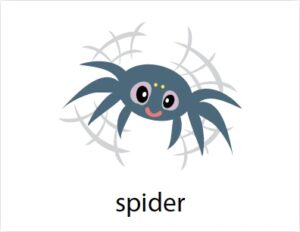 picture when you explain the word is the name of what is shown in the picture. Example: “There is a word on our card. This word says bus. There is a picture of a bus on our card.”
picture when you explain the word is the name of what is shown in the picture. Example: “There is a word on our card. This word says bus. There is a picture of a bus on our card.”
Repeat this process with several more cards. Then display one of the cards you reviewed with toddlers.]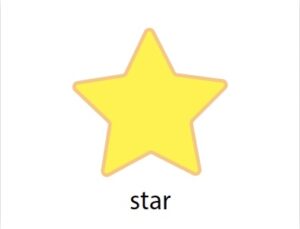
Remember, this card tells us about one of the songs we like to sing. Let’s sing the song together.
[Lead toddlers in singing one verse of the song. Hold the card for toddlers to see while you sing. Refrain from saying the name of the song until you have finished singing. If time and toddler interest permit, hold up another card and invite toddlers to sing the first verse with you.]
We looked at some picture cards about songs we like to sing. We figured out which card goes with which song.
One of the challenges in facilitating any informal gathering is monitoring children’s comprehension of information shared in the session. In the current activity, it is important to remember that if some toddlers accurately identify the name of a pictured item or the song the item represents, this does not mean that all toddlers in the gathering have a similar level of understanding. The first Extra Support tip suggested below—repeating in a clear voice the name of the item identified by toddlers—is one simple way to reinforce learning and ensure all toddlers hear the word.
In addition to supporting toddlers’ awareness that symbols (pictures) can be used to represent a song, the suggested approach to the cards can help toddlers distinguish words and pictures. Look for opportunities to promote this important literacy goal. (See Enrichment tip.) Teaching specific words is not a goal at this age.
Extra support
Enrichment
Receptive language, Awareness of print and pictures
A toddler looks at and talks about sequenced pictures in a handwashing poster or daily schedule.

Handwashing poster (see Be Prepared)

Picture

Be Prepared: The activity description assumes a handwashing poster is used but you may use pictures in your room’s posted daily schedule instead. If you focus the activity on handwashing pictures, use the handwashing poster displayed in your room or a poster available from the Centers for Disease Control and Prevention (CDC) at the following site: https://www.cdc.gov/handwashing/posters.html. An image of the CDC poster is embedded in this activity description. It’s important for the poster to be mostly pictures or drawings of the sequence of steps in washing hands.
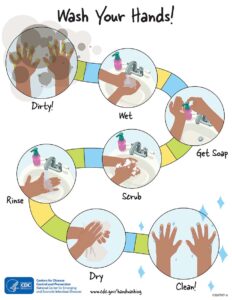 Invite a toddler to look at pictures of how we wash our hands. Follow the sequence shown in the poster. Point to each illustration and encourage the toddler to talk about what the picture tells us. Repeat and elaborate on the toddler’s comments. Offer a simple description of a picture if the toddler seems uncertain about a picture. Emphasize the sequence of steps shown in the pictures. Example: After talking about a picture, introduce the next picture by pointing to it and saying “Then we do this. What does this picture tell us?” Be flexible about how many pictures a toddler wishes to look at and talk about.
Invite a toddler to look at pictures of how we wash our hands. Follow the sequence shown in the poster. Point to each illustration and encourage the toddler to talk about what the picture tells us. Repeat and elaborate on the toddler’s comments. Offer a simple description of a picture if the toddler seems uncertain about a picture. Emphasize the sequence of steps shown in the pictures. Example: After talking about a picture, introduce the next picture by pointing to it and saying “Then we do this. What does this picture tell us?” Be flexible about how many pictures a toddler wishes to look at and talk about.
The focus on symbols in this activity option is more challenging than Options 1 and 2 because all pictures relate to the same task and the pictures show a sequence. The activity provides an opportunity to focus on specific components of handwashing. Anticipate differences across toddlers in their interest in taking a closer look at the parts of handwashing. Some toddlers may look at and talk about 1–2 pictures in the poster and then move on. In addition to helping a toddler consider what a picture tells us, look for ways to promote the cognitive benefit of noticing the sequence of steps. There is similar opportunity and benefit if you opt to use your room’s pictures of the daily schedule.
Extra support
Enrichment
Materials Needed: Option 2 picture cards and Optional Reading books
Put the books and picture cards on a low table and invite toddlers to put a card with its corresponding book. Share a book of interest with an individual toddler or small gathering of toddlers. Encourage toddlers to talk about how the book tells us about the song.
Materials Needed: see activity description
You may wish to consider adding symbols to your setting, such as creating a sign-in area where older toddlers and preschool-age children can make a mark next to their picture at arrival/departure times. You also may wish to prepare and use symbol cards to represent activity choices for the next play period, such as a simple drawing of a tricycle as one choice for outdoor play.